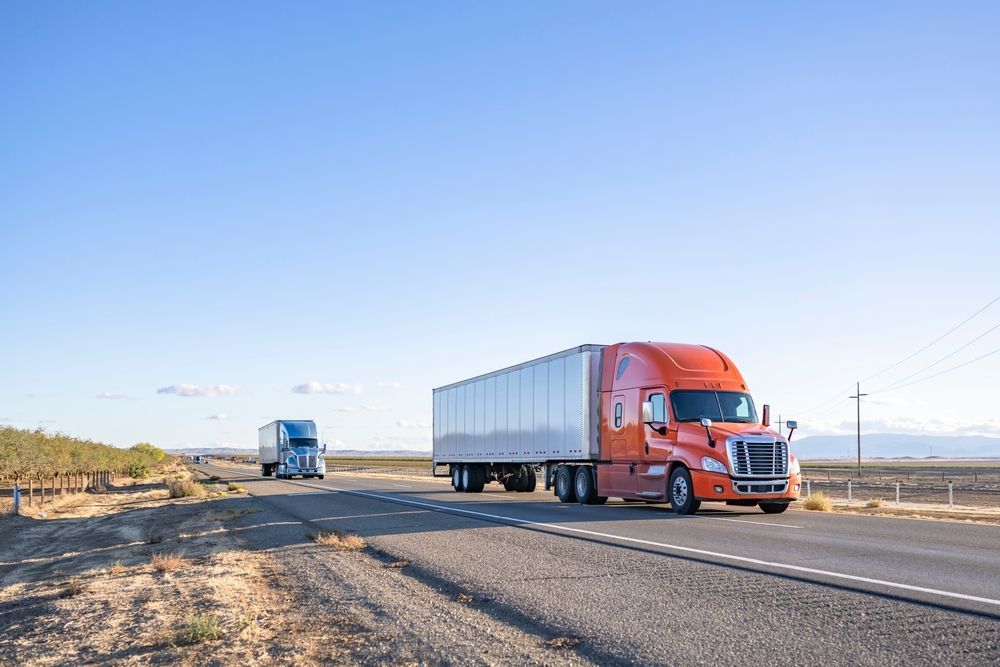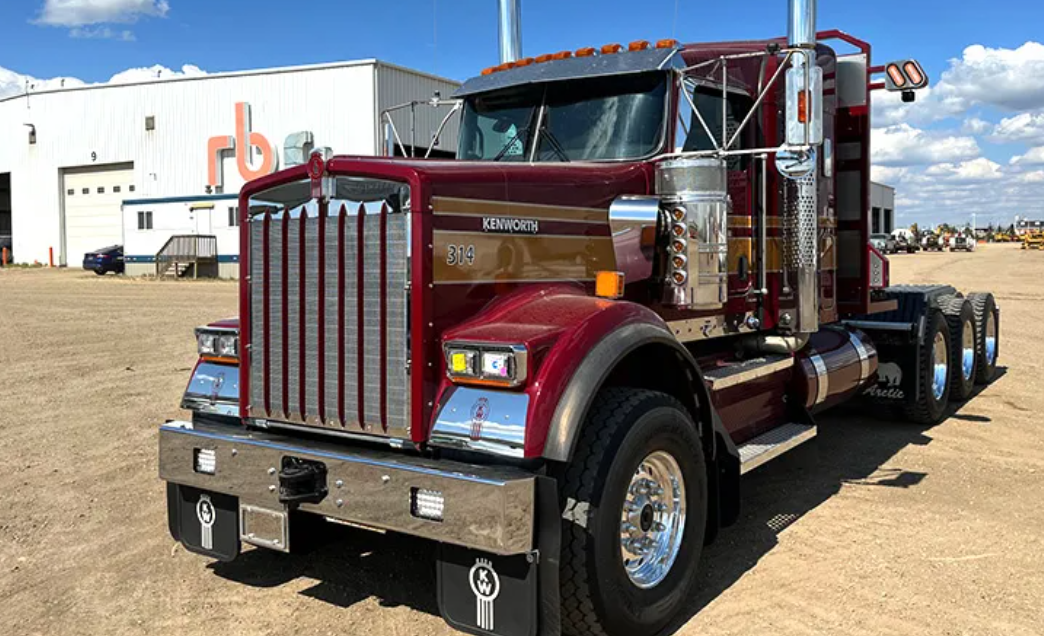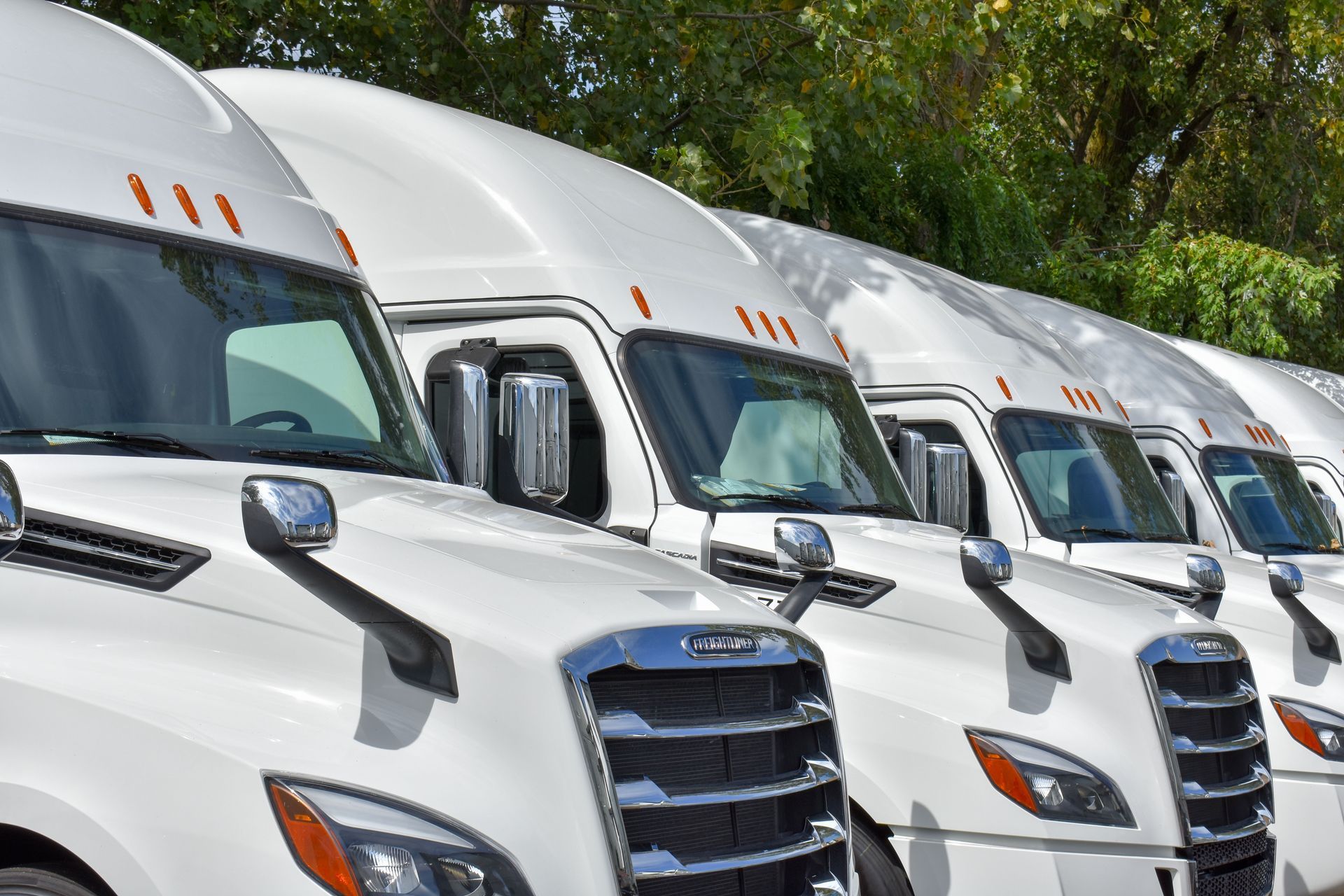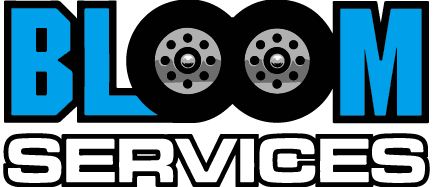WRITTEN BY: BLOOM SERVICES

Discover what you need to know about owner-operator lease agreements with this comprehensive guide. As an owner-operator looking to lease your services, understanding these agreements is necessary. We’ll delve into the key aspects and the most information you need to navigate owner-operator lease agreements from the types of agreements and how to become a successful owner-operator.
What is an Owner-Operator Lease Agreement
An owner-operator lease agreement is a formal contract that outlines the specific terms and conditions under which a trucking company engages in the services of independent truck drivers. This agreement is essential because the owner-operators are not employees but rather independent contractors providing hauling services to the company. In exchange for their services, the company agrees to pay the driver an agreed-upon fee.
A comprehensive lease agreement between the trucking company and the owner-operator addresses potential contingencies that may arise during their temporary partnership. This serves to establish clear and legally binding expectations.
Types of Owner-Operator Lease Agreements
When it comes to owner-operator lease agreements, three primary types cater to the various ways independent truck drivers run their businesses. These agreements play a crucial role in defining the working relationship between the owner-operator and the carrier, each with its unique features and implications. Let’s explore these three main types in more detail.
Lease-Purchase Agreement
The lease-purchase agreement is an arrangement that serves as a stepping stone for independent truck drivers to purchase a semitruck while maintaining the advantages of having leased equipment. In this type of agreement, the driver enters into a contract with a trucking company in which they lease the truck they operate. What sets this agreement apart is the enticing option it offers at the end of the lease term—the opportunity to buy the truck outright or to own the truck upon completion.
Here’s how it works: Throughout the lease period, the driver makes regular lease payments, similar to renting. However, as the term progresses, a portion of these payments may be allocated toward the eventual purchase price of the semitruck. This setup allows drivers to gradually build equity in the vehicle they’re operating, effectively working their way toward ownership.
This arrangement carries several benefits. First, it provides aspiring owner-operators with a reliable means of acquiring their own semitruck. Second, it allows drivers to enjoy the reliability and quality of a company-provided truck while having a clear pathway to becoming independent truck owners, allowing for a balance between immediate access to equipment and the long-term goal of full ownership.
Lease Program
Lease programs are crafted to offer independent truck drivers a streamlined path to accessing company-owned or affiliated trucks for a defined duration. This arrangement is particularly appealing for drivers who seek the flexibility of renting a truck from a trucking company without committing to long-term ownership.
In the framework of a lease program, the driver becomes a temporary custodian of the company’s truck. During the specified lease period, they operate the vehicle and fulfill their hauling responsibilities, much like an owner-operator. This grants them the operational benefits and efficiency of using company-provided equipment.

One of the standouts of lease programs is the potential for post-lease options. Drivers often have the choice to renew the lease for another term or, in some cases, purchase the vehicle outright. This versatility caters to a broad spectrum of preferences and business strategies, making lease programs an attractive choice for those who desire short-term commitments while retaining the option to transition to ownership.
The advantages of lease programs are multifaceted. They offer access to well-maintained, company-owned trucks, sparing drivers the burden of purchasing and maintaining their own equipment. Overall, lease programs offer a pragmatic middle ground between the perks of company resources and the freedom of a shorter commitment for independent truck drivers.
Lease-On Agreement
A lease-on agreement represents a straightforward and independent approach within the trucking industry. In this arrangement, independent truck drivers maintain ownership of their own trucks and enter into a contract with a trucking company to provide their services and equipment to move freight. This type of agreement provides drivers with a high degree of autonomy in terms of equipment ownership while capitalizing on their partnership with a larger trucking company.
Under the lease-on agreement, the drivers join forces with the company to primarily haul freight on its behalf, utilizing their own truck and expertise. This approach allows drivers to retain full control over their equipment, from maintenance to customization, ensuring that their rig aligns perfectly with their preferences and operational requirements.
The appeal of the lease-on agreement lies in its balance between independence and collaboration. Independent truck drivers benefit from the resources, clientele, and extensive network of the trucking company, which can translate into a steady flow of assignments and access to established routes. Simultaneously, they maintain ownership of their equipment, eliminating the financial commitment of leasing or purchasing a company truck.
This arrangement is particularly attractive to experienced owner-operators who have already invested in their trucks and prefer to maintain control over their assets while leveraging the reach and support of a larger company. It exemplifies the spirit of entrepreneurship within the trucking industry, allowing drivers to reap the benefits of their own investments while capitalizing on the infrastructure and opportunities provided by their chosen trucking company.
These three types of owner-operator lease agreements provide flexibility and options for both trucking companies and independent drivers, catering to diverse business models and goals within the trucking industry. Understanding the nuances of each agreement type is essential for making informed decisions that align with individual business strategies and objectives.
Essential Components of Owner-Operator Lease Agreements
No matter which flavor of lease agreement you opt for, it’s vital to have your contractual ducks in a row. The Federal Motor Carrier Safety Administration has regulations that they call “truth in leasing”. These guidelines set out what contracts can and cannot have in them.
Let’s break down the essential ingredients for these lease arrangements:
Party Identification: You’ll need the names of both the driver and the carrier company, including any aliases (DBAs). And don’t forget the signatures of all
parties involved.
Duration: The agreement should stipulate the commencement and termination dates of the contract. It should also account for potential extensions, which may become necessary due to factors like inclement weather, loading/unloading delays, or unforeseen circumstances.
Equipment: Clarity regarding the equipment to be utilized is essential. This encompasses not only the truck itself but also details pertaining to trailers, liftgates, tiedown devices, and converter dollies. Additionally, it should specify which party is responsible for providing or bearing the costs associated
with the specified equipment.
Possession and Control: The agreement must clearly outline that, during the leasing term, the trucking company retains control over the owner-operator driver and any equipment used. It establishes that the owner-operator is obligated to adhere to the specific rules and directives set forth by the trucking company throughout the duration of the lease.
Compensation: The various methods through which the trucking company will compensate the driver for transporting specific cargo need to be explicitly defined within the agreement. This section should evaluate the pay rates, including any variable components such as mileage, freight type, or bonuses.
These contract components aren’t just legal jargon; they’re the notes and responsibilities that compose owner-operator lease agreements. They bring clarity and the assurance that everyone’s on the same page, ensuring a smoother ride.
Tips for Successful Lease Agreements

Entering into a lease agreement, whether as an independent, is a significant step in one’s career. These contracts can shape the course of your business, and ensuring their success requires careful consideration and diligence. Here are some valuable tips for crafting and maintaining successful lease agreements:
Thoroughly Understand the Terms: Before signing on the dotted line, make sure you have a comprehensive understanding of every clause and condition within the lease agreement. Seek legal counsel if needed to ensure that the terms are fair, reasonable, and align with your objectives.
Clearly Define Responsibilities: Clearly outline the roles and responsibilities of each party involved. Whether you’re the driver or the company, everyone should have a crystal-clear understanding of what’s expected of them. This includes details about maintenance, insurance, payments, and compliance with regulations.
Financial Transparency: Ensure that the financial aspects of the agreement are transparent and well-documented. Specify the compensation structure, payment schedules, and any potential deductions or bonuses. Having a clear financial framework reduces the likelihood of disputes down the road.
Include Contingency Plans: Life on the road can be unpredictable. Lease agreements should include contingency plans for unexpected events like breakdowns, accidents, or delays. Address how these situations will be managed, including responsibilities and financial arrangements.
Regular Communication: Foster open lines of communication between all parties involved. Regularly discuss the progress of the lease, address any issues promptly, and adapt the agreement if necessary. Regular communication helps build trust and collaboration.
Compliance with Regulations: Ensure that your lease agreement complies with all relevant regulations, including those set forth by the Federal Motor Carrier Safety Administration (FMCSA) and any state-specific requirements. Non-compliance can lead to legal troubles and financial penalties.
Periodic Review and Updates: As your business evolves and industry conditions change, periodically review and update your lease agreements. What worked in the past may not be suitable for the future. Keep your contracts in sync with your business goals and industry trends.
Legal Expertise: Consider consulting with legal experts who specialize in transportation law. They can provide invaluable insights, ensure legal compliance, and help you navigate complex clauses or disputes that may arise during the lease.
Document Everything: Keep thorough records of all lease-related transactions, communications, and maintenance activities. These records serve as a crucial reference in case of disputes or audits.
Evaluate Your Options: Finally, always be open to exploring different lease options and providers. Don’t settle for an agreement that doesn’t align with your long-term goals. Continuously assess your options to ensure you’re getting the best deal for your specific circumstances.
Successful lease agreements are built on transparency, communication, and a clear understanding of responsibilities. By following these tips and maintaining a diligent approach, you can create and sustain lease agreements that benefit all parties involved.
Why Choose Bloom Services for Owner-Operator Lease Agreements?
Choosing Bloom Services for an Owner-Operator Lease Agreement offers several advantages:
High Earnings Potential: Bloom Services pays 82% of the gross load to drivers. This high percentage can significantly boost your earning potential. Weekly earnings typically range from $2,300 to $4,000, depending on the miles covered. The more miles you drive, the higher your potential earnings.
Flexible Dispatch: While Bloom operates with what is called “Educated Dispatch,” where dispatchers play a key role in load assignments, there’s a balance between dispatcher expertise and driver preferences. This system ensures efficiency while also considering driver inputs.
Fuel Card Benefits: Bloom Services provides two fuel cards with discounts applied at the pump, helping to reduce one of the major expenses
in trucking operations.
Equipment Quality: The company offers modern trucks for lease, including 2020-2024 Freightliner Cascadias and Volvo 860s. These trucks come equipped with essential amenities and are designed for fuel efficiency.
Rider and Pet Policy: Bloom Services is accommodating when it comes to riders and pets, allowing drivers to have a companion or their pets with
them on the road.
Lease Purchase Program: The lease purchase program at Bloom Services is structured to enable drivers to own a truck in 3 years without a balloon payment, offering a clear path to truck ownership.
Transparent and Direct Communication: The company maintains open and clear communication channels, ensuring that drivers are well-informed and supported.
It’s important to note that while Bloom Services offers these benefits, they do not provide health insurance or other traditional employee benefits, as drivers are considered independent contractors under a 1099 arrangement. This setup may require drivers to manage their own taxes and insurance needs.
Overall, Bloom Services offers a combination of financial opportunity, operational support, and flexibility that can be incredibly attractive to owner-operators looking for lease agreements. If you are interested in own day becoming an owner-operator, contact us or apply today.



office & Parking depot
5120 Belmont Rd Unit K, Downers Grove, IL 60515, USA
Hours of operation
Mon - Sun: 7am-5pm
